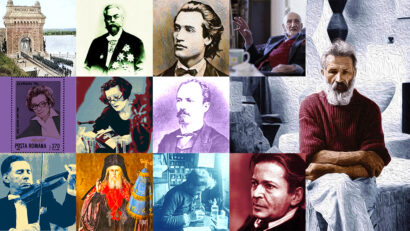The Library of Sinaia Monastery
What is less known is the connection between this monastery and the modern libraries in Wallachia.

Christine Leșcu, 18.05.2024, 13:48
In the medieval Romanian space, erudition, together with everything related to learning as well as the writing and printing of books, were concentrated inside and around the monasteries. An example in this respect is the Sinaia Monastery, located in the mountain resort with the same name, on the Prahova Valley. Having an impressive architecture, this Orthodox place of worship also stood out for its association with an noble family of scholars: the Cantacuzino family. In fact, the founder of the monastery, built between 1690 and 1695, is Mihail Cantacuzino, the one who, in Bucharest, built the first civil hospital, the Coltea hospital.
What is less known is the connection between this monastery and the modern libraries in Wallachia, a connection that is now emphasized by Simona Lazăr, researcher and librarian at the Carmen Sylva Cultural Center in Sinaia: “In 1695, when the monastery was opened, it was also when the foundations of the first Sinaia library were laid. Mihail Cantacuzino’s brother, Constantin Cantacuzino, a great scholar of his time, gave the monastery the book that still bears the inventory number 1. It is the “Gospel in Greek and Romanian”, printed in 1693 in Bucharest. At the moment, the monastery owns four copies of this work, which has something special from my point of view. It unites four Cantacuzini brothers. How? The donation was made by Constantin Cantacuzino to the monastery built by his brother, the patron Mihail Cantacuzino, published in 1693 in the printing press established almost a decade before by his brother, Şerban Cantacuzino, ruler of Wallachia, and translated in previous years by another brother, Iordache Cantacuzino. The monastery has books in Romanian, but written in Slavonic, with Cyrillic letters. It even has books in German. For example, the oldest book is the New Testament published in Leipzig in 1564, followed by an Anthology from Câmpina from 1643, then a correction of the law in 1652, in Târgoviște. Then come, in chronological order, the Bible from Bucharest 1688, also printed under the supervision of a Cantacuzino and therefore known as the Bible of Șerban Cantacuzino, given that he ordered its printing. But this library of the monastery grew over time. Most of the books that entered the library were religious books used during the service.”
In fact, the love of books is another characteristic of the Cantacuzino family, a family that produced many rulers in Wallachia and marked political and cultural history up to the present day, as Simona Lazăr explains: “In order to understand how four brothers can be so close to books, we should know something about their childhood. Their father had founded in his own house a small library both for his soul and for science, for the upbringing of his children. They understood what reading meant and that is where their development began. I dare say that the seed of this library in Sinaia was also planted there. At least two of the brothers, Constantin and Mihail, studied in Padua. Constantin Cantacuzino loved collecting books, so that when he returned to the country, he founded his own library at the Mărgineni monastery. We librarians, also owe something to Constantin Cantacuzino: the fact that he brought from Padua the science of bibliographical description of books, as it was in the 17th century. Of course, a lot has changed in the meantime, but the way in which today, we catalogue books collected in a space that we call library, whether private, monastic or public, began in Wallachia thanks to Constantin Cantacuzino.”
As for the Sinaia monastery, it was founded by Mihail Cantacuzino was expanded between 1842 and 1846 with a larger church and two buildings for monks’ accomodation. It gained its current appearance however, between 1897 and 1903, when Nifon Popescu was an abbot there and when large restoration works during the reign of King Carol I began. Simona Lazăr: ”The monastery enriched its collection of old books under the rule of Carol I. At that time, the monastery was part of the 19 hermitages and monasteries under the care of the Civil Hospitals Eforia. The effort to establish a museum began, the first monastic museum in Romania to be inaugurated in 1895, when the monastery was two centuries old. So, around 1890, the abbot of the monastery received the serious task of going through the parishes that were in that region and collecting everything he could, from religious objects to old books for the establishment of the museum.”
Unfortunately, in 1948, the monastery’s library entered, by order of the communist authorities, a period of so-called “denazification”, many volumes being taken from Sinaia, never to be found again. (EE)






























